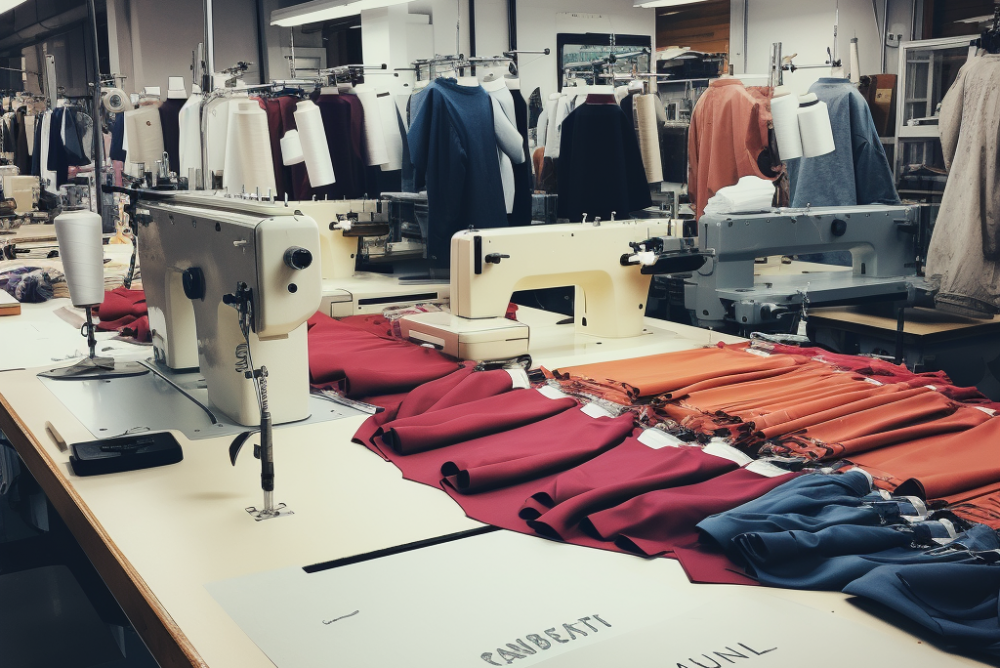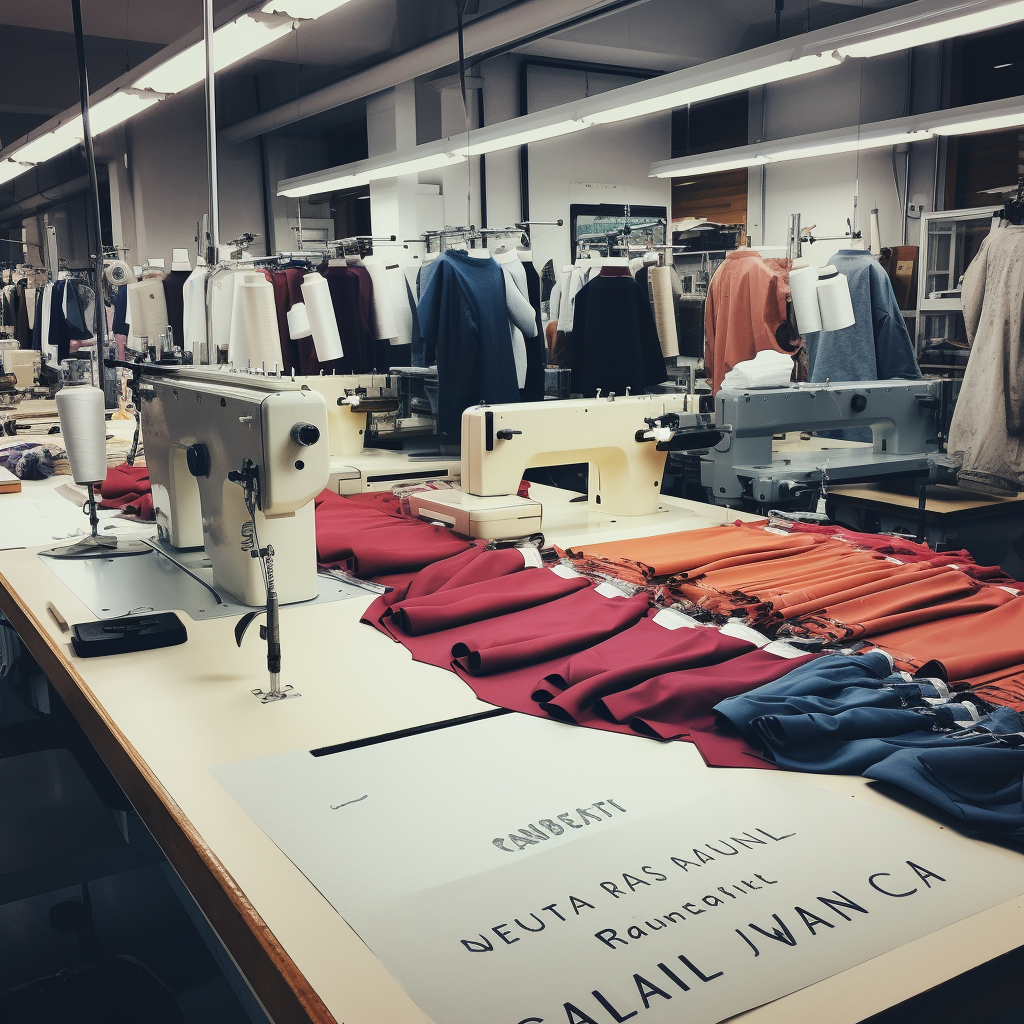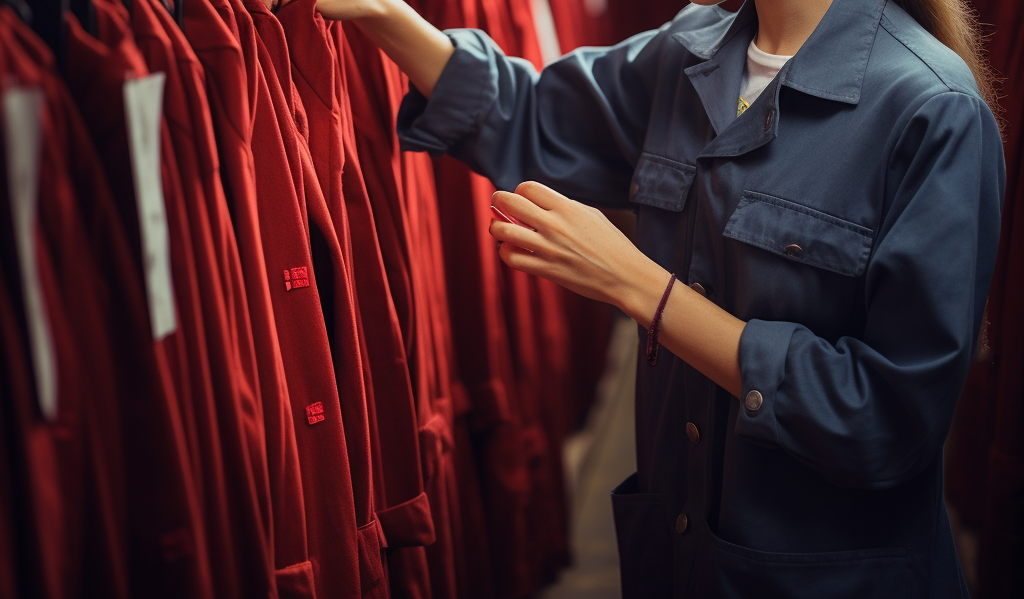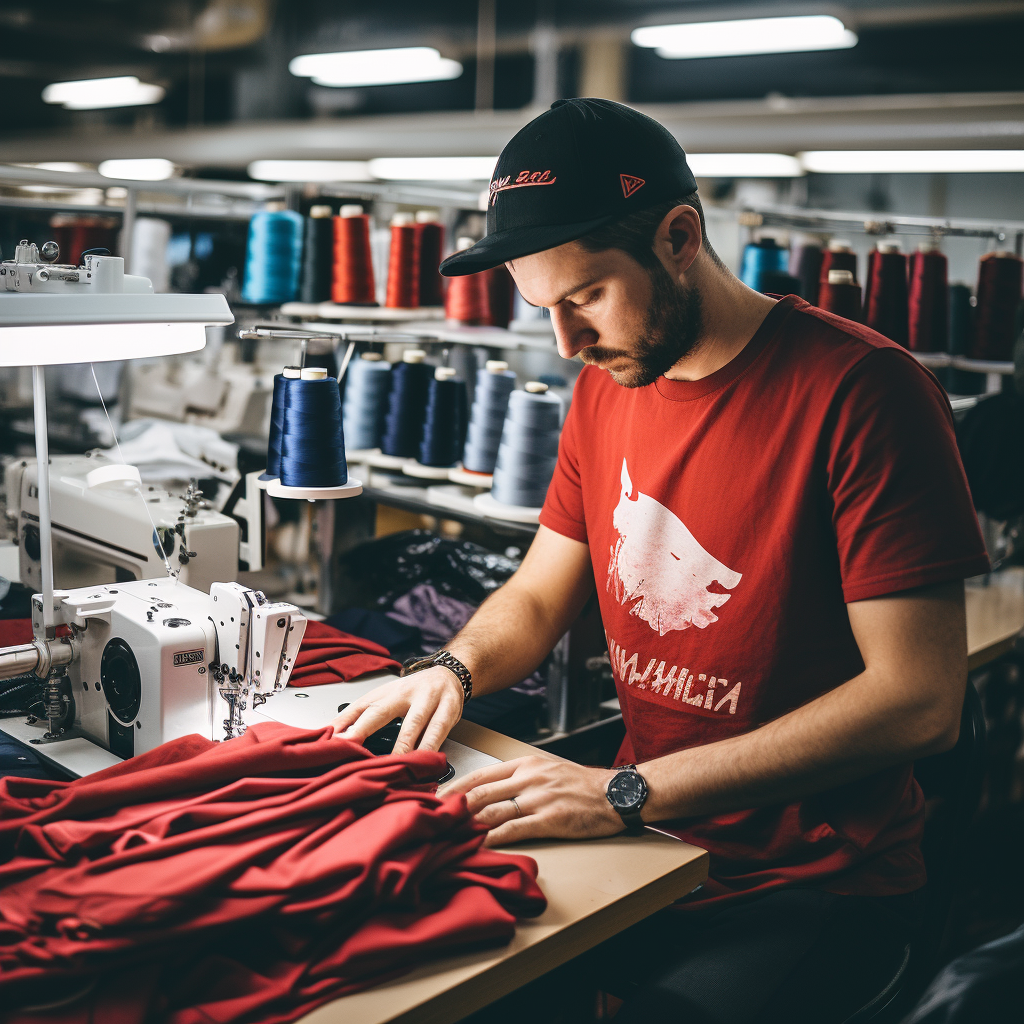Mastering Apparel Quality Control: Proven Strategies for Excellence


In the dynamic world of fashion and apparel manufacturing, quality is more than just a buzzword—it's the lifeline of a thriving business. The market is saturated, and competition is fierce. Brands are vying for customer attention, and with the rise of social media and instant reviews, even a single quality mishap can lead to severe repercussions. From a damaged brand image to financial setbacks, the effects can be long-lasting.
Quality control in apparel manufacturing, therefore, is not just about ensuring that a garment looks and fits well. It's about ensuring consistency, meeting industry standards, and above all, keeping the end consumer's trust intact. It's no longer just the concern of the quality department; it's the responsibility of everyone involved in the production process.
Many organizations have tried and tested various methods to streamline their quality control processes. Some have succeeded, while others have found themselves back at square one. This article will delve into some of the most effective, time-tested tricks to manage apparel bulk quality control. Drawing from real-life examples and data, we will guide manufacturers, brands, and even individual fashion enthusiasts through the intricate maze of quality control, ensuring the delivery of top-notch apparel every single time.
The Importance of Quality Control in Apparel Manufacturing
The global apparel market is vast, projected to reach a staggering $1.5 trillion by 2025. In such a colossal industry, ensuring consistent quality isn't merely an added advantage—it's a necessity. Let's take a closer look at why quality control is such an imperative in this sector.
1. Customer Loyalty and Retention:
In an age where consumers have a multitude of choices at their fingertips, maintaining their trust is paramount. A single quality mishap can deter a customer for life. Conversely, consistently high-quality garments can turn first-time buyers into lifelong brand loyalists.
2. Brand Image and Reputation:
The apparel market is built largely on perception. Brands invest significant sums in marketing and image-building. A single lapse in quality control can lead to negative reviews, tarnishing the brand's image, sometimes irreparably.
3. Financial Implications:
Defective products often lead to returns, which can be a logistical and financial nightmare for businesses. The cost of addressing post-sale issues often outweighs the investment in a robust quality control mechanism.
4. Regulatory Compliance:
In many regions, apparel manufacturing is subject to stringent regulations, especially when it comes to children's wear or specialty fabrics. Effective quality control ensures compliance, reducing the risk of penalties or product recalls.
5. Ethical Considerations:
Quality control isn't just about the end product. It also ensures that the production process adheres to ethical standards, from fair wages to safe working conditions. Consumers are increasingly making choices based on a brand's ethical stance, making this a critical consideration.
6. Sustainability:
A focus on quality control often leads to reduced waste, as fewer products are discarded due to defects. In an era where sustainability is more than a buzzword, this aspect of quality control cannot be overlooked.
By understanding the manifold implications of quality control, businesses can prioritize and invest in appropriate strategies, tools, and training. As we delve deeper into the tried and tested tricks of the trade in the upcoming sections, it's essential to keep these overarching objectives in mind.

Key Components of Apparel Quality Control
Before diving into the tricks of the trade, it's crucial to understand the foundational elements that constitute a robust apparel quality control mechanism. These components form the backbone upon which effective strategies and techniques are built.
1. Raw Material Inspection:
Everything starts with the raw materials - fabrics, buttons, zippers, and other embellishments. Ensuring their quality and durability is the first step in the QC process.
2. Pattern Accuracy and Fit:
Patterns dictate the shape and fit of the garment. Ensuring pattern precision is crucial, as even minor discrepancies can lead to significant quality issues in the final product.
3. Sewing and Stitching:
The durability of a garment often hinges on the quality of its seams. Regular inspection of stitching quality, thread tension, and seam strength is essential.
4. Finishing Touches:
This includes processes like dyeing, printing, and adding embellishments. These need to be free from defects, color inconsistencies, or misalignments.
5. Measurements and Sizing:
Apparel that doesn't fit as expected leads to customer dissatisfaction. Ensuring consistent sizing across different batches is a must.
6. Garment Durability:
This involves testing garments for their resistance to wear and tear, repeated washing, and environmental factors like sunlight.
7. Packaging and Labeling:
The final touch, ensuring that garments are packed adequately to prevent damage, and that labeling is accurate, helps avoid potential returns or complaints.
Tested Tricks and Techniques for Effective Quality Control
Having established the groundwork, it's time to delve into the specific techniques that have been tried, tested, and trusted by industry leaders. These methods not only ensure quality but also streamline operations, ultimately leading to increased profitability.
a. Detailed Specifications and Prototyping:
It's often said, "Well begun is half done." Providing detailed specifications to your production team minimizes ambiguities. This involves clear documentation on design, measurements, color codes, and fabric details. Prototyping, or developing a sample garment before bulk production, allows for real-world testing and rectification of any flaws at an early stage.
b. Implementing a Layered Quality Control System:
Relying on a single quality check at the end of the production line can be risky. Implementing a layered system where QC is done at multiple stages—post-cutting, post-stitching, post-finishing—reduces the chance of defects going unnoticed.
c. Continuous Training and Development:
The human element in apparel manufacturing is substantial. Regular training sessions ensure that staff are updated on the latest QC standards, techniques, and technologies. A skilled and knowledgeable workforce is often the best defense against quality lapses.
d. Utilizing Modern Technology and Automation:
Technological advancements have provided tools that can detect defects or inconsistencies faster and more accurately than the human eye. Automated cutting machines ensure precise pattern cuts, while computerized color-matching tools ensure consistency in dyeing processes.
e. Regular Audits and Feedback Mechanisms:
Periodic audits, both internal and by third-party agencies, can provide an unbiased view of the QC processes in place. Coupled with a robust feedback mechanism where issues are discussed, and solutions are brainstormed, this ensures a cycle of continuous improvement.
Incorporating these tricks and techniques does require an initial investment in terms of time, effort, and often capital. However, the long-term benefits—reduced return rates, enhanced customer loyalty, and strengthened brand reputation—far outweigh the costs. As with any strategy, the key is in the implementation. Regular reviews, willingness to adapt, and an unyielding focus on quality will steer any apparel business in the right direction.
Case Studies: Successful Implementation of QC in Apparel Manufacturing
Drawing from real-world scenarios provides a tangible understanding of the importance of quality control and how it can be effectively applied. Here are a few instances where brands and manufacturers have harnessed the power of meticulous QC processes to drive success.
1. Uniqlo: Mastering Consistency Across the Globe
Uniqlo, a Japanese apparel giant, has established a reputation for providing consistent quality across its 2,000+ stores worldwide. One of their standout QC measures is the establishment of the "Takumi Team." This group of textile experts supervises every step of the production process, from yarn selection to the finished product. Their active involvement ensures that a shirt bought in Tokyo feels and fits the same as one purchased in New York.
2. Patagonia: Commitment to Sustainability and Quality
An outdoor apparel brand, Patagonia, integrates quality with sustainability. Their "Worn Wear" initiative encourages consumers to return used Patagonia items, which are then repaired and resold. This commitment to longevity is underpinned by rigorous QC processes in production. By ensuring garments are built to last, Patagonia reinforces its brand promise while minimizing environmental impact.
3. Zara: Fast Fashion, Not Fast Fading
While Zara is known for its rapid production cycles, it does not compromise on quality. The brand has invested heavily in state-of-the-art manufacturing equipment. Automated systems, such as laser cutting tools, ensure precision in garment production. Coupled with regular quality checks, Zara manages to deliver trendy apparel that doesn’t fade fast in terms of style or substance.
4. Lululemon: Bouncing Back with Better Quality Control
In 2013, Lululemon faced a significant setback with a recall of their yoga pants, which were deemed too transparent. However, the brand took this as an opportunity to revamp their QC processes. Introducing stringent fabric tests, investing in training, and increasing transparency about their production processes, they transformed a potential disaster into a trust-building exercise with their customers.
These case studies underscore the importance of a proactive approach to quality control. By learning from their experiences, both positive and negative, these brands have showcased the tangible benefits of a solid QC strategy.

Potential Challenges and Solutions
Despite the best intentions and rigorous processes, challenges in quality control are inevitable. Recognizing these potential pitfalls and preparing for them can make the difference between a minor hiccup and a major setback.
1. Variability in Raw Materials:
Challenge: Even when sourced from consistent suppliers, raw materials can exhibit variations in quality, texture, or color.
Solution: Regular testing of raw materials and maintaining a robust relationship with suppliers can ensure consistency. Diversifying sources and keeping backup suppliers can also be beneficial.
2. Human Error:
Challenge: No matter how well-trained, humans are prone to mistakes. A lapse in attention or misinterpretation can lead to QC issues.
Solution: Implementing automation wherever feasible can reduce human error. Furthermore, fostering an organizational culture where errors are discussed openly can lead to continuous learning and improvement.
3. Technological Failures:
Challenge: Machinery can break down, or software systems can glitch, leading to production halts or defects.
Solution: Regular maintenance of equipment, coupled with updated training on software systems, can minimize these issues. It's also crucial to have a responsive IT and technical support team.
4. Rapid Production Timelines:
Challenge: The fast-paced nature of the fashion industry often leads to rushed production cycles, potentially compromising QC.
Solution: While speed is essential, it shouldn't come at the cost of quality. Efficient project management, realistic timelines, and clear communication across departments can ensure a balance between speed and quality.
5. Global Supply Chains:
Challenge: With production units spread across different regions or countries, maintaining consistent QC standards can be challenging.
Solution: Regular audits, centralized training sessions, and investing in communication tools can ensure that all units, irrespective of their location, adhere to the same QC benchmarks.
6. Evolving Standards and Regulations:
Challenge: Quality standards, especially in international markets, can evolve. Keeping up with these changes can be daunting.
Solution: Dedicated teams or individuals who stay updated with industry standards, participate in workshops, and maintain connections with regulatory bodies can ensure compliance.
Addressing these challenges head-on, with a proactive mindset, can not only prevent potential issues but also improve the overall QC process. The solutions lie in a combination of technology, training, and tenacity.
Conclusion
Quality control in the apparel industry is an ongoing journey, not a destination. As fashion evolves, driven by changing consumer preferences, technological advancements, and global market dynamics, the approach to ensuring top-notch quality must also adapt.
From the raw materials chosen to the final stitch on a garment, every step holds the potential to elevate a brand or lead to its downfall. As we've explored in this article, a multitude of tried and tested tricks exists to manage apparel bulk quality control effectively. But the underlying theme across all these methods remains the same: a steadfast commitment to delivering the best to the end consumer.
Whether you're a seasoned apparel manufacturer, an emerging brand, or someone simply interested in the intricacies of fashion production, remember that quality is an investment. It's an investment in customer loyalty, brand reputation, and long-term profitability.
By prioritizing quality control, staying updated with industry best practices, and continuously seeking improvement, apparel businesses can not only navigate the challenges of today but also set the stage for future success. In a world overflowing with choices, consistent, high-quality offerings will always find a dedicated audience, proving that in the realm of fashion, quality never goes out of style.





-500x500.jpg)
-500x500.jpg)
-500x500.jpg)
-500x500.jpg)
-500x500.jpg)